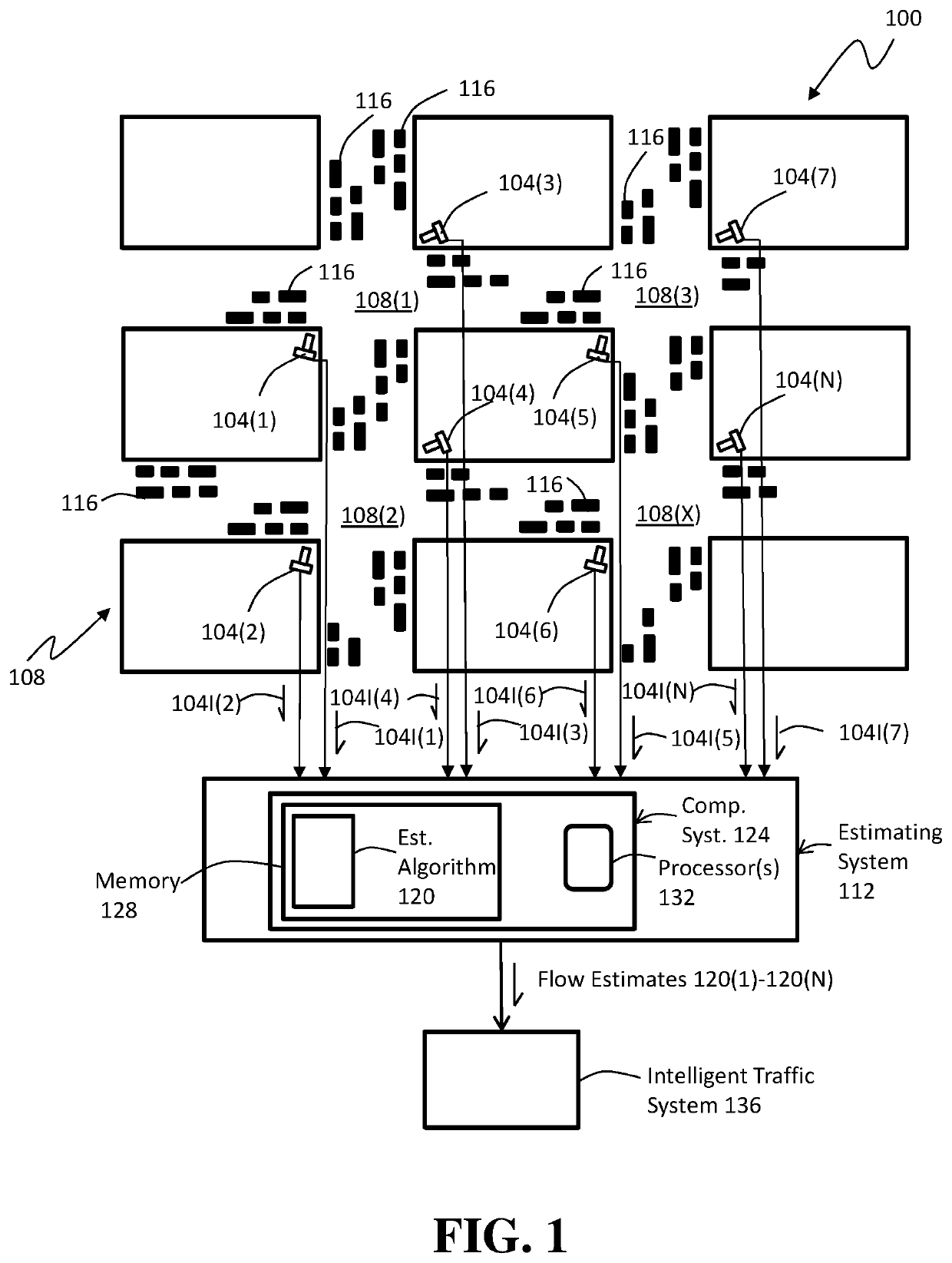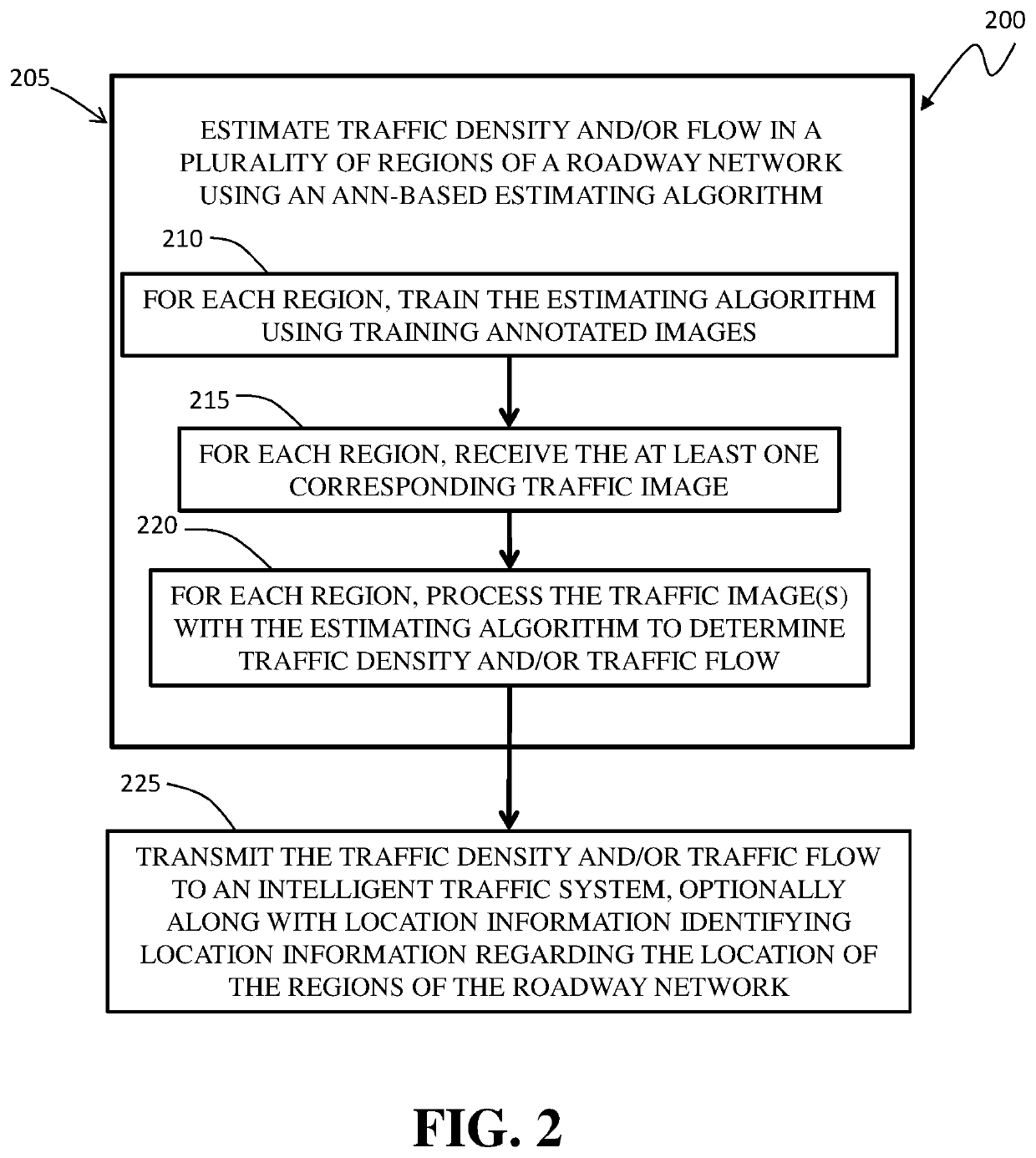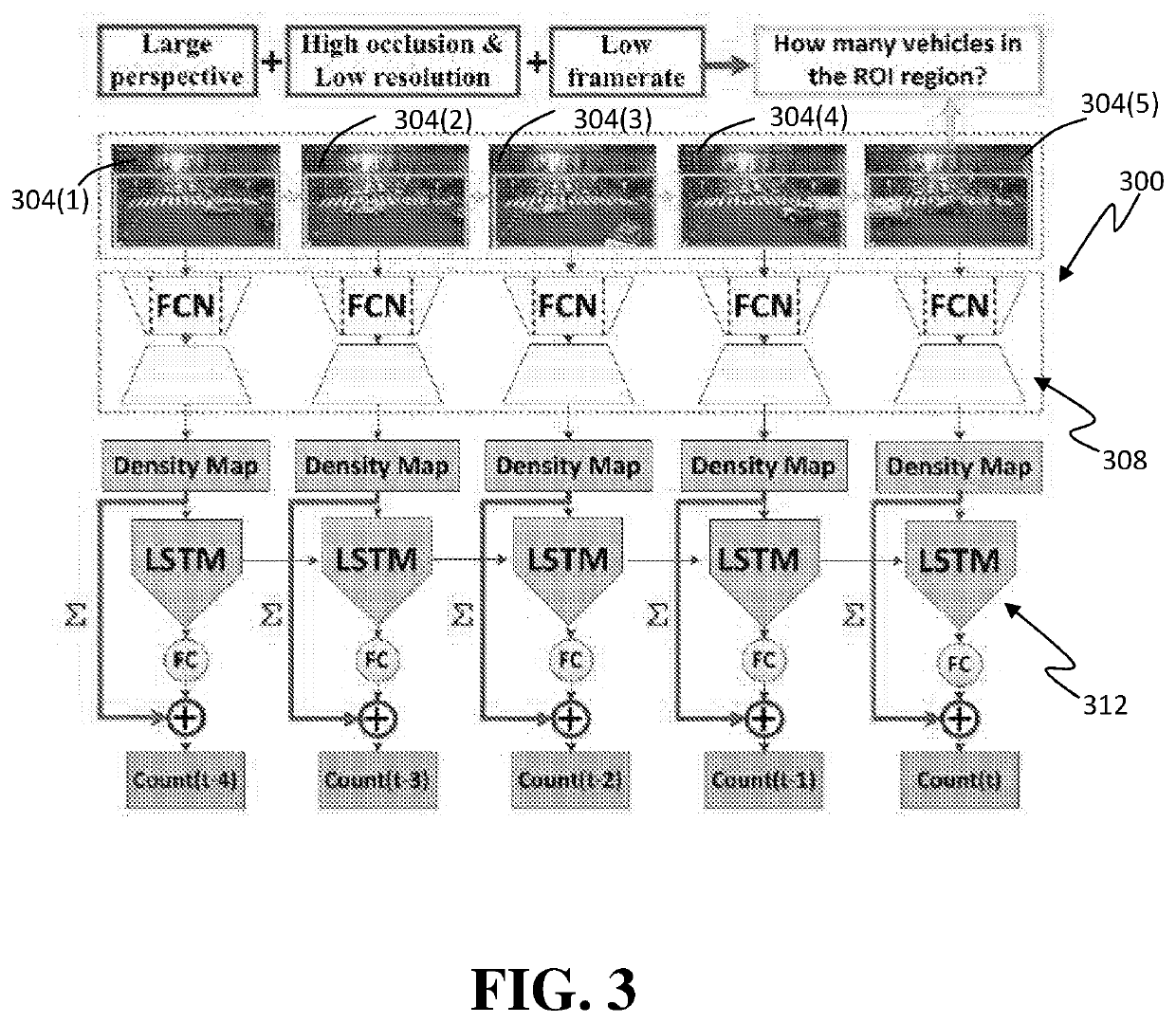Deep Learning Methods For Estimating Density and/or Flow of Objects, and Related Methods and Software
a technology of density and/or flow, applied in the field of deep learning methods for estimating density and/or flow of objects using machine vision, can solve the problems of low quality, preclude most existing traffic flow analysis techniques, and much less work on processing simultaneously streaming video from the city
- Summary
- Abstract
- Description
- Claims
- Application Information
AI Technical Summary
Benefits of technology
Problems solved by technology
Method used
Image
Examples
Embodiment Construction
[0026]In some aspects, the present disclosure is directed to methods of estimating the density and / or flow of objects using machine vision. (As used herein, the term “and / or” when used as a conjunctive between two items means one of the items, the other of the items, or both of the items, depending on implementational choice.) Typically, the objects are visually varied in nature in any one or more of a variety of ways. For example, in a traffic context, the objects are vehicles that usually (unless restrictions such as “buses only” or “no trucks allowed” are in place) can be of virtually any type (e.g., passenger car, SUV, minivan, van, box truck, tractor-trailer, city bus, interstate bus, recreational vehicles, work truck, etc.) and can be virtually any manufacturer make and model, past or present. As another example, in a crowd context, the objects are typically humans that can be any gender, size, age, standing, sitting, facing in any direction, etc. These conditions alone and th...
PUM
 Login to View More
Login to View More Abstract
Description
Claims
Application Information
 Login to View More
Login to View More - R&D
- Intellectual Property
- Life Sciences
- Materials
- Tech Scout
- Unparalleled Data Quality
- Higher Quality Content
- 60% Fewer Hallucinations
Browse by: Latest US Patents, China's latest patents, Technical Efficacy Thesaurus, Application Domain, Technology Topic, Popular Technical Reports.
© 2025 PatSnap. All rights reserved.Legal|Privacy policy|Modern Slavery Act Transparency Statement|Sitemap|About US| Contact US: help@patsnap.com



